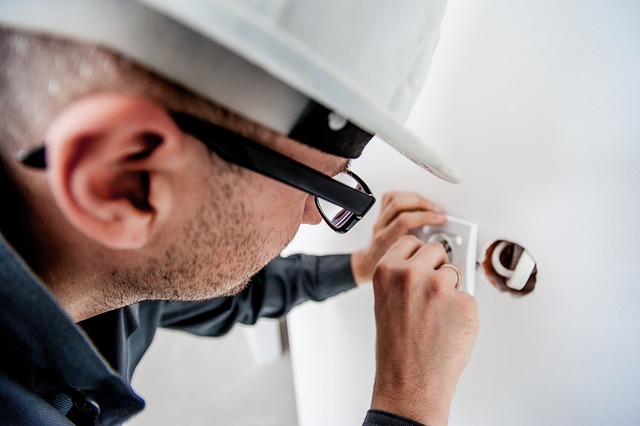Electricians are experts in addressing various electrical issues, from simple flickering lights to complex faulty wiring. Many common problems can be spotted by homeowners, who can perform basic troubleshooting like checking circuit breakers and replacing fuses. However, for complex or recurring issues, consulting a licensed electrician is vital for safety and effective long-term solutions.
Are you tired of unexpected power outages or flickering lights? Understanding common electrical malfunctions is the first step towards ensuring a safe and seamless home environment. This comprehensive guide navigates through identifying issues like blown fuses and tripped circuit breakers, offering troubleshooting steps for homeowners, and highlighting signs that warrant calling a professional electrician. By the end, you’ll be equipped to handle basic repairs while knowing when to trust licensed experts for complex tasks.
- Understanding Common Electrical Malfunctions
- – Identifying common issues like blown fuses, tripped circuit breakers, flickering lights, and power outages.
- Troubleshooting Steps for Homeowners
Understanding Common Electrical Malfunctions

Electricians often encounter various electrical malfunctions, each with its own set of symptoms and potential causes. Common issues include flickering lights, circuit breakers tripping frequently, power outages in specific areas of a home or building, and faulty outlets that don’t work or overheat. Understanding these problems is the first step towards effective troubleshooting.
Many malfunctions can be traced back to simple fixable errors like loose connections, faulty wiring, or outdated electrical systems. Overloaded circuits, damaged insulation, and improperly installed fixtures are also frequent culprits. An electrician’s expertise lies in identifying these issues through careful inspection, testing, and diagnostic techniques, ensuring that the root cause is addressed for long-lasting solutions.
– Identifying common issues like blown fuses, tripped circuit breakers, flickering lights, and power outages.

Many electrical issues can be easily identified by homeowners, even without professional help. Common problems like blown fuses or tripped circuit breakers often signal a power surge or an overloaded circuit. These can typically be addressed by resetting the breaker or replacing a fuse. Flickering lights might indicate loose wiring or a failing light fixture, which is usually a straightforward fix. Power outages, while disruptive, are usually temporary and can be resolved by checking your main electrical panel for any tripped switches.
If these basic troubleshooting steps don’t resolve the issue, it’s crucial to consult an electrician. More complex problems such as faulty wiring, damaged insulation, or outdated electrical systems require professional expertise to ensure safety. An electrician can identify issues like arcing, which may indicate a loose connection or a failing component, and address them before they escalate into more severe malfunctions or safety hazards.
Troubleshooting Steps for Homeowners

When faced with electrical malfunctions, homeowners can take several troubleshooting steps before calling an electrician. Start by identifying the specific issue; is the problem limited to one appliance or affecting multiple devices? Check circuit breakers for tripped switches and reset them if necessary. If a particular outlet or switch seems faulty, try replacing the fuse associated with that circuit.
Visual inspection can reveal loose connections or damaged wiring. Look for signs of burning, fraying, or exposed wires. In cases of outdated wiring or frequent issues, consult a licensed electrician for a thorough assessment and safe fixes to avoid potential hazards.
Electrical malfunctions can disrupt your daily life, but with a basic understanding of common issues and troubleshooting steps, you can often fix them yourself. While for more complex problems, seeking the expertise of a qualified electrician is essential, knowing how to navigate simple electrical fixes can save time and money. By identifying symptoms like blown fuses or flickering lights and taking proactive measures, homeowners can ensure their safety and maintain a well-functioning electrical system.
